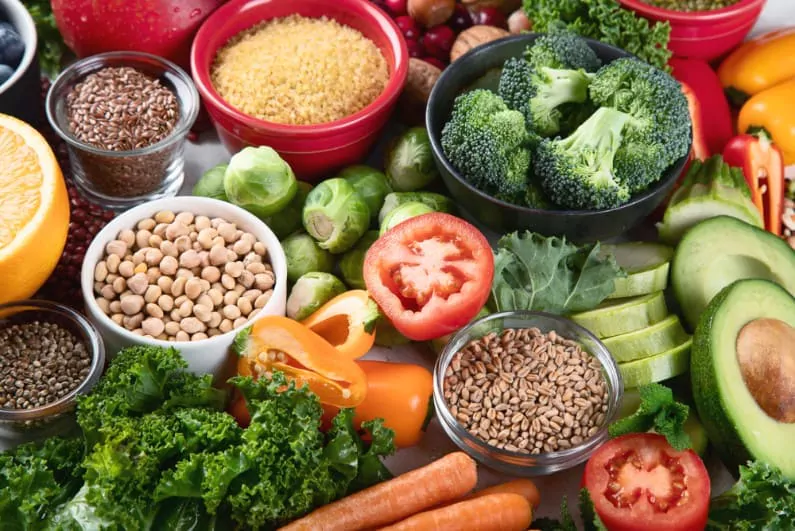How to Increase Melanin in Skin Naturally?

Everyone’s skin is unique, and the colours vary across different individuals. The spectrum of skin colours, from the lightest porcelain to the deepest ebony, is a result of the pigments in our skin. One such pigment, melanin, plays a vital role in determining skin colour. However, beyond aesthetics, melanin is instrumental in safeguarding our skin from harmful UV rays. Hence, it is crucial to maintain and enhance melanin production when needed.
This blog will provide an in-depth understanding of how to increase melanin in skin naturally. However, remember that it’s essential to consult a professional before starting any new health routine.
1 What is Melanin?
Melanin is a pigment found in most organisms, including humans. It’s produced by cells known as melanocytes through a process called melanogenesis. The amount and type of melanin produced by your body determines your skin, hair, and eye colour. There are three types of melanin: eumelanin (brown to black), pheomelanin (yellow to red), and neuromelanin (found in the brain). Of these, eumelanin and pheomelanin play a significant role in skin colour.
Melanin serves various purposes, but its primary function is to protect your skin from harmful ultraviolet (UV) radiation. It does this by absorbing the UV radiation and dissipating it as heat, preventing it from causing DNA damage to skin cells. This is why individuals with darker skin (higher melanin levels) have a lower risk of skin cancer compared to those with lighter skin (lower melanin levels).
2 Why Should You Increase Melanin?
The quest for a tanned, glowing complexion is one reason why many people seek to increase their skin’s melanin content. However, it’s also about health and protection. With a higher melanin content, your skin has a better natural defence against the sun’s harmful rays. However, it’s important to remember that while melanin provides some natural protection against sunburn, it does not make one invincible against UV radiation, and everyone should still practise safe sun habits.
3 Natural Ways to Increase Melanin Production
While it’s crucial to note that genetics largely influence melanin production, there are still certain natural methods to stimulate its production in your skin. Let’s explore these methods:
Nutrient-Rich Diet

One of the easiest and most effective ways to increase melanin production is through a nutrient-rich diet.
Vitamins: Vitamins A, C, and E are all essential in the melanin production process. Foods rich in these vitamins, such as carrots (vitamin A), citrus fruits (vitamin C), and almonds (vitamin E), are beneficial for promoting melanin production.
Tyrosine: Tyrosine is an amino acid that’s crucial for the production of melanin. You can find it in foods like eggs, fish, oats, and dairy products.
Antioxidants: Antioxidants are compounds that protect your cells from damage. Foods rich in antioxidants, like berries, spinach, and nuts, can help protect your skin cells and promote melanin production.
Copper: Copper plays a significant role in melanin production. Foods rich in copper, like nuts, shellfish, and whole grains, can help stimulate melanin production.
Omega-3 fatty acids: Found in fish, walnuts, and flaxseeds, omega-3 fatty acids can help stimulate melanin production.
Responsible Sun Exposure

Moderate exposure to sunlight is one of the most natural ways to boost melanin production in the skin. The UV radiation from the sun stimulates melanocytes to produce more melanin. However, excessive exposure can cause sunburns, premature ageing, and increase the risk of skin cancer. Hence, it is advisable to limit sun exposure to 10-30 minutes a day, preferably in the early morning or late afternoon when the sun is not at its peak.
Use Safe Tanning Methods

While natural sunlight can stimulate melanin production, there are safer ways to achieve a tanned look without the risk of skin damage. Self-tanning products and tanning accelerators can enhance melanin production without the need for excessive sun exposure. However, it’s crucial to choose products free from harmful chemicals and those that suit your skin type.
Use of Topical Creams and Lotions

Certain creams and lotions contain ingredients that can stimulate melanin production. Look for products containing ingredients like forskolin, a compound derived from the root of the Coleus forskohlii plant, which can stimulate melanin production when applied topically.
Regular Exercise

Regular exercise can boost blood circulation in your body, thereby ensuring that your skin cells receive all the necessary nutrients for optimal function. This, in turn, can help stimulate melanin production.
Adequate Sleep

Research suggests that sleep deprivation can lead to pale skin, dark under-eye circles, and reduced skin health. Hence, adequate sleep might play a role in maintaining healthy melanin levels.
4 Other Factors to Consider
While the above methods can help stimulate melanin production, it’s crucial to consider additional factors:
Genetics: Your genetics plays a crucial role in the amount of melanin your body can produce. Some individuals naturally produce more melanin than others, regardless of diet or lifestyle.
Age: As you age, your body’s ability to produce melanin may decrease. This can lead to conditions like vitiligo or greying hair.
Health conditions: Certain health conditions, such as albinism and vitiligo, can affect melanin production.
5 How to Maintain Your Skin Health?
While it’s crucial to boost melanin production when necessary, maintaining overall skin health is just as important. Here are some ways to maintain your skin health:
Hydration: Keeping your skin hydrated is vital for maintaining skin health. Drink plenty of water and use hydrating skincare products to keep your skin moisturised.
Protection: Protect your skin from harmful UV rays by wearing protective clothing and using a broad-spectrum sunscreen.
Healthy lifestyle: Maintain a healthy lifestyle by eating a balanced diet, getting enough sleep, and engaging in regular exercise.
Regular skin check-ups: Regular skin check-ups can help detect any skin conditions early, ensuring prompt treatment and prevention of further complications.
6 What to Avoid?
While trying to increase melanin levels naturally, it’s also crucial to be aware of factors that can decrease melanin. Smoking, high alcohol intake, and prolonged exposure to harsh chemicals can damage melanocytes and hinder melanin production. It’s also advised to avoid excessive sun exposure without protection, which can lead to skin damage and diseases such as skin cancer.
7 Wrapping Up
While melanin plays a crucial role in skin colour and protection against UV radiation, its production is influenced by several factors, including diet, lifestyle, and genetics. Incorporating nutrient-rich foods, moderate sun exposure, safe tanning methods, and regular exercise into your routine can help stimulate melanin production. Additionally, maintaining overall skin health is just as crucial. However, remember that any significant changes in your skin should be evaluated by a healthcare professional.
Embracing your natural skin tone is beautiful. This guide merely offers ways to enhance your skin’s natural defence mechanism and is not meant to promote skin darkening for purely aesthetic reasons. Always remember each skin colour is unique and beautiful in its way. Stay healthy and confident in your skin.
Community Q&A
About This Article
This article has been viewed 463 times.



